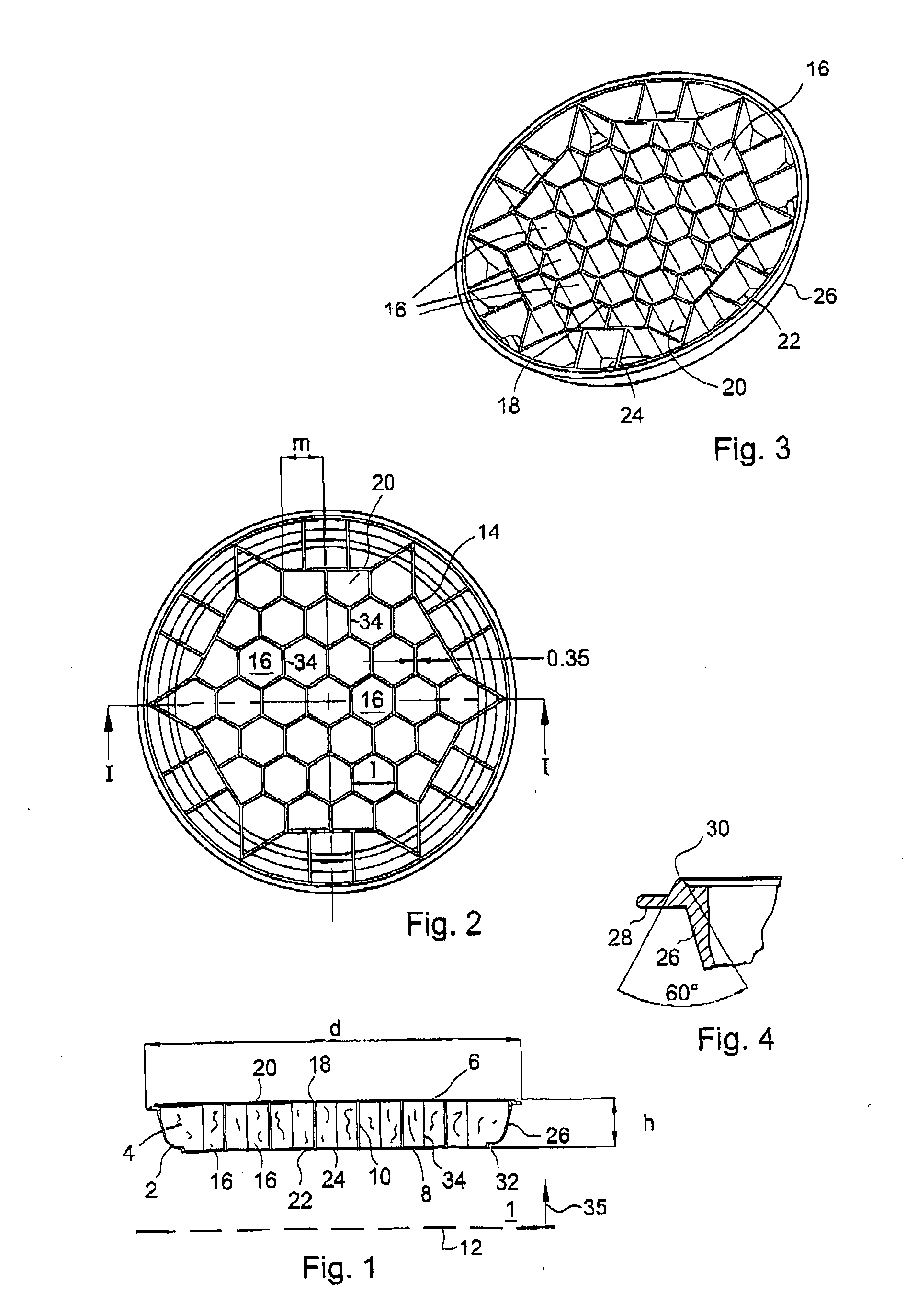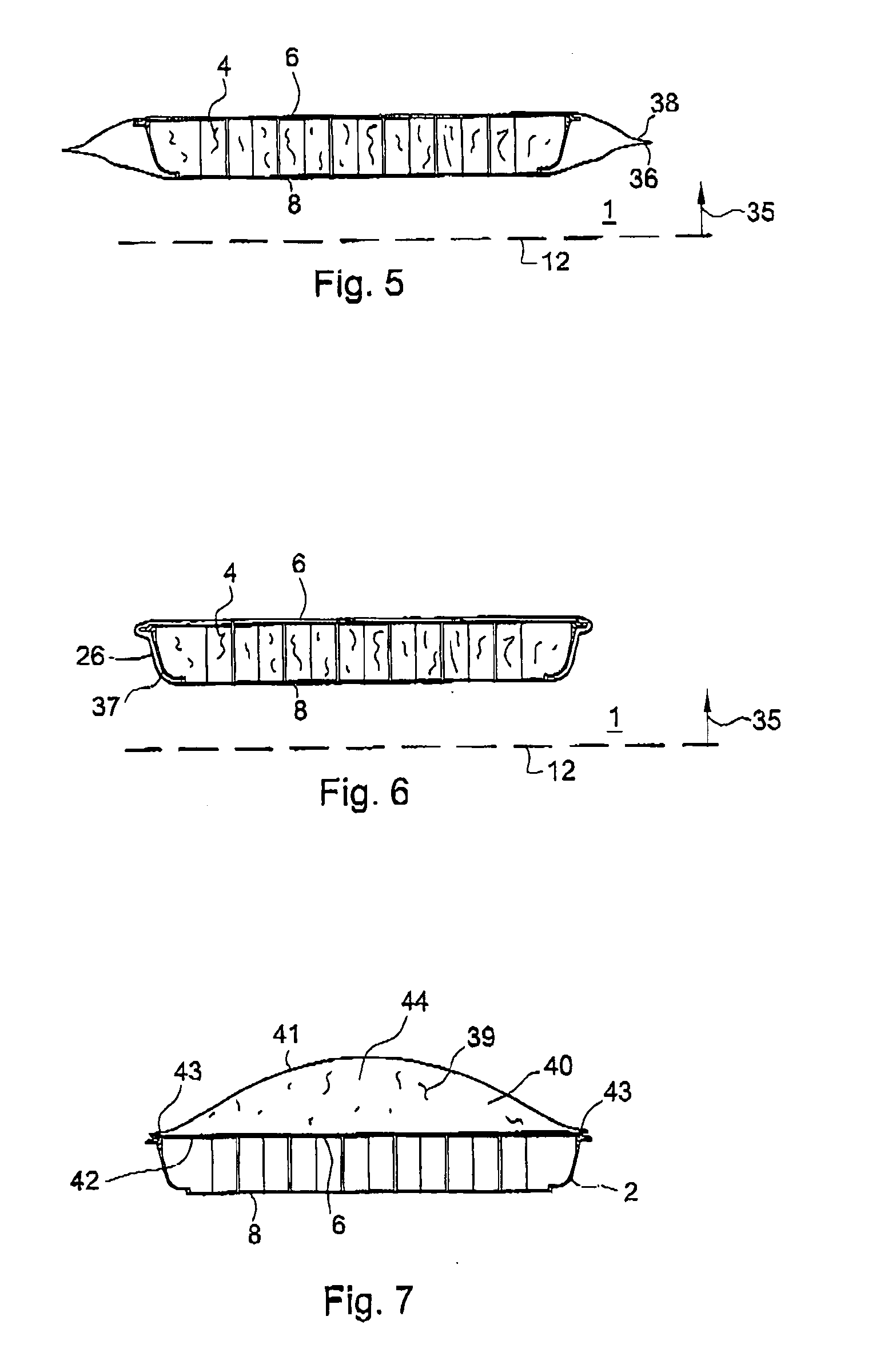Form-retaining pad for preparing a beverage suitable for consumption
a technology for retaining pads and beverages, applied in the field of pads for preparing beverages suitable for consumption, can solve the problems of disturbing the extraction process, considerable part of the substance remains in the pad unused, and the water-soluble substance does not dissolve, so as to achieve good permeability and improve the effect of spreading
- Summary
- Abstract
- Description
- Claims
- Application Information
AI Technical Summary
Benefits of technology
Problems solved by technology
Method used
Image
Examples
Embodiment Construction
[0043]In FIG. 1, reference numeral 1 designates a form-retaining pad for preparing a beverage suitable for consumption according to the invention. The form-retaining pad 1 is provided with at least one first covering 2 in which a water-soluble substance 4 is included. In this example, the water soluble substance consists of milk powder / creamer. Other substances, such as powders for preparing drinking chocolate and other beverages suitable for consumption are also conceivable. Also, substances in other forms than powder form are possible such as concentrates and extracts.
[0044]The covering 2 comprises a top sheet 6 manufactured from sheet shaped filter material and a bottom sheet 8 manufactured from sheet shaped filter material. In this example, the top sheet 6 and the bottom sheet 8 are each manufactured from filter paper. However, other filter materials such as filter materials of a synthetic are also possible. The form retaining pad is further provided with a stiffening body 10 wh...
PUM
 Login to View More
Login to View More Abstract
Description
Claims
Application Information
 Login to View More
Login to View More - R&D
- Intellectual Property
- Life Sciences
- Materials
- Tech Scout
- Unparalleled Data Quality
- Higher Quality Content
- 60% Fewer Hallucinations
Browse by: Latest US Patents, China's latest patents, Technical Efficacy Thesaurus, Application Domain, Technology Topic, Popular Technical Reports.
© 2025 PatSnap. All rights reserved.Legal|Privacy policy|Modern Slavery Act Transparency Statement|Sitemap|About US| Contact US: help@patsnap.com



